Wind and Components
In this article we are going to cover the subject of wind direction relative to a reference direction (runway, plane…) and the components of the wind.
Simply it is easy to say that if the wind blows exactly to the opposite direction to the plane (let’s set plane flying direction as reference direction) than it is called Head Wind. As opposite, if it blows from the back or if it blows to same direction with plane, then it is called Tail Wind. Finally, if the direction of the wind is exactly making 90 degrees with the plane, then it is called Cross wind.
Here comes the question, if the wind blows from another direction then what happens? What are the components of the wind?
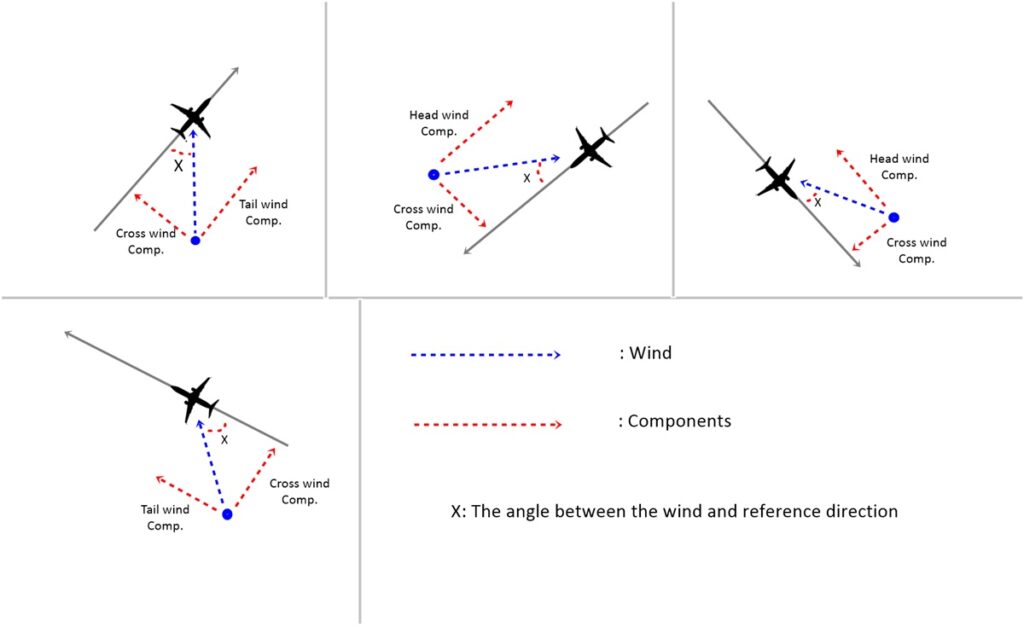
To clearly understand the topic, we must divide the subject into two sections. First is the wind direction relative to reference direction. Second is the components of the wind with simple trigonometry.
Let’s start with the wind direction and the angle from the reference direction. When we say wind is from 240 degrees it means that wind blows from 240, means the heading of the wind is 060 or if we call that wind is from 360 degrees it means that wind blows directly from the North.
So what is the angle between the wind and the reference direction? The angle is the degree difference between the winds blowing direction and the reference direction (plane, runway…).
See the figure 1.
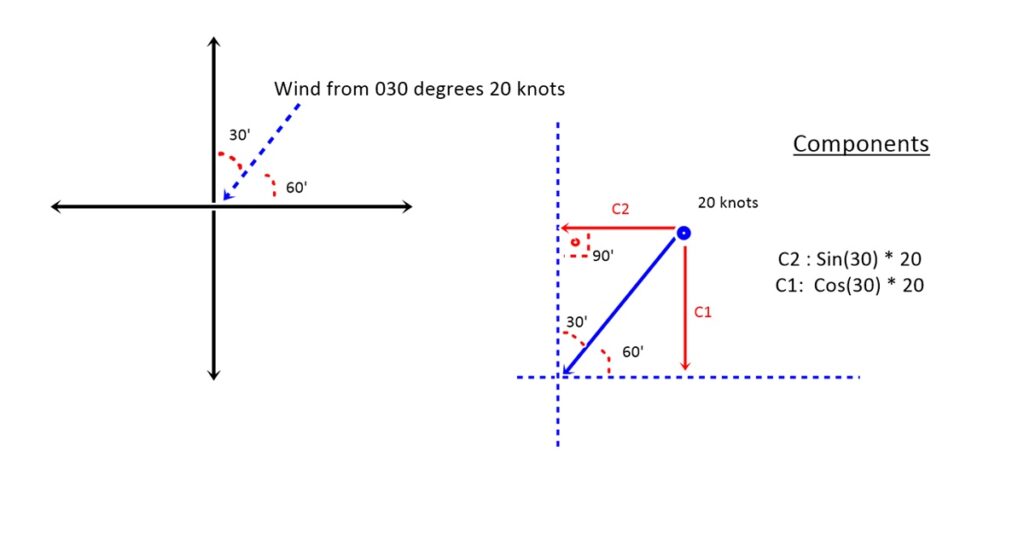
Finally, here comes the math. To calculate or at least understand the components of the wind we must dig into trigonometry a little bit. When we call a wind we define a wind speed and the direction. Let’s define one.
Wind is from 030 degrees 20 knots. Then the components are: Sin (30’) * 20 and Cos (30’) * 20.
(You may use Trigonometric ratio table for the values)
Then the question comes to mind that if the wind is from 110 degrees or 240 degrees or any direction. Then again the calculation method is same but the components vary between tail wind component and head wind component. You can find the details in the figure 1.
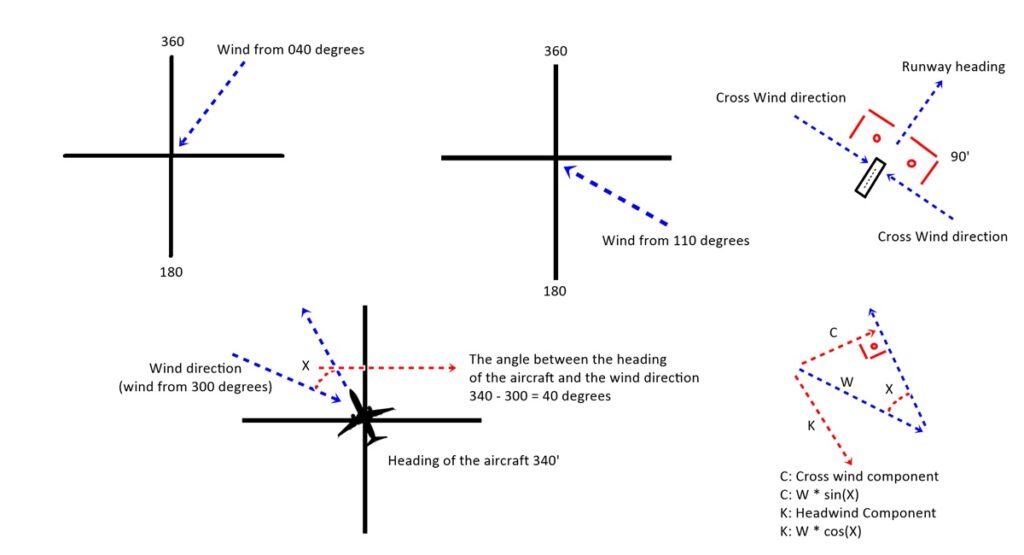
Farewell…


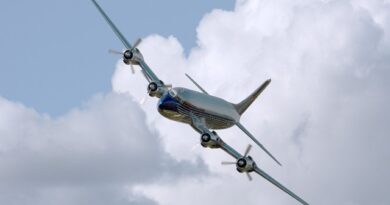
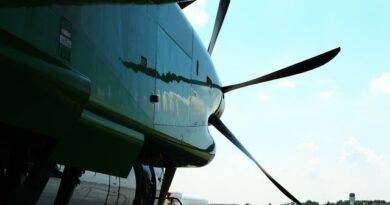
Thanks for all the best made essentials of aviaton subjects.
Thank you, we will keep hard work…